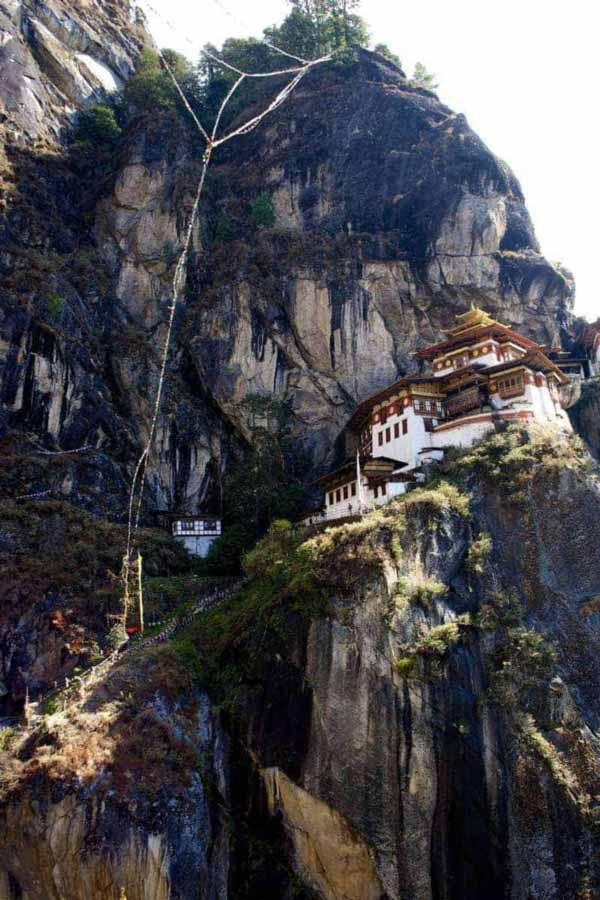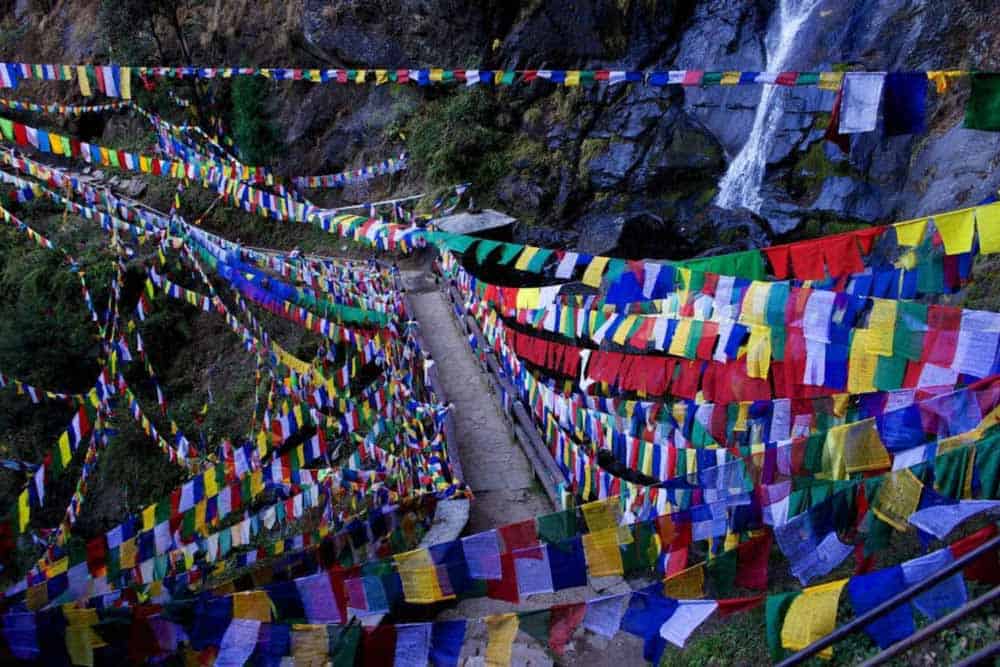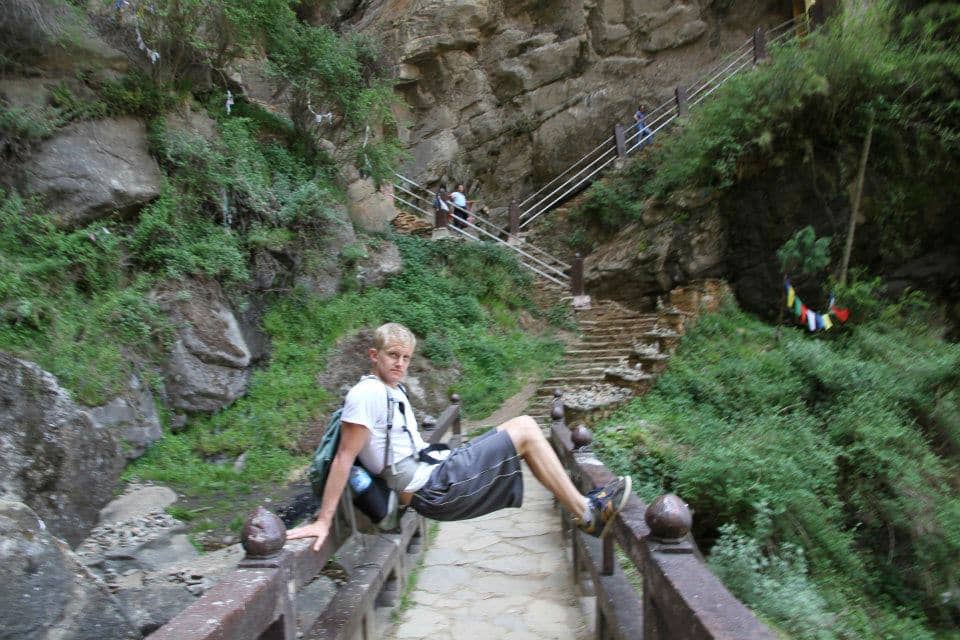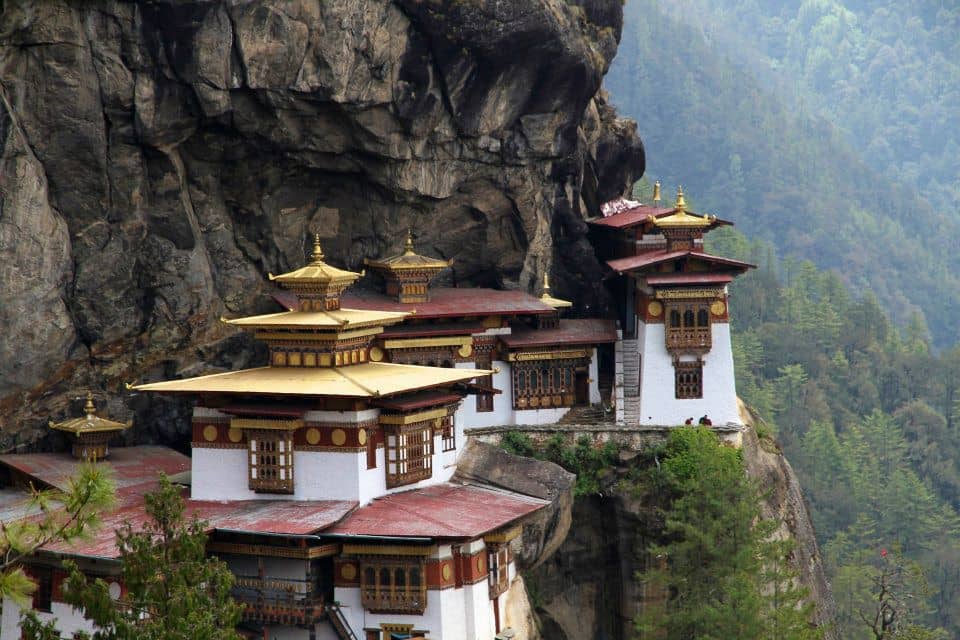As your lungs scream and tear at your chest, desperate for every drop of oxygen they can get, you push yourself up the last stretch of the mountain, thighs aching, calves cramping, focusing on each step carved into the cliff and trying not to think about the dizzying drop below. You try to recite the Dzongkhan meditation that your guide taught you days before, hoping it will help you climb this final leg. As you take a break--ostensibly to watch hundreds of butterflies emerging from their cocoons and to tighten the laces on your brand new hiking boots, but really to give your exhausted body a well-deserved rest--you notice a hunched-over old woman, wearing wooden sandals and carrying a bundle of sticks as big as she is, contentedly humming to herself as she trundles up the steps. Welcome to Tiger's Nest. Nestled into a cliff 3,000 feet above the floor of the Paro Valley, and resting at an elevation of over 10,000 feet above sea level, Tiger's Nest (or Paro Taktsang) is one of over 40 monasteries in the tiny Himalayan Kingdom of Bhutan. Accessible only by foot via a steep, winding and slippery path, the temple was built in 1692 by Tenzin Rabgye. Legend has it that Guru Rinpoche--a celebrity in Bhutan's quasi-historical, multi-faceted Tibetan Buddhist tradition--flew up to the cliff on the back of a tigress and meditated for 3 years, 3 months, 3 days, 3 hours, and 3 minutes. Today visitors no longer have access to flying tigers, but they can rent a horse to take them about two-thirds of the way up.
The hike to Tiger's Nest--a challenge for some, a pilgrimage for others--is an essential part of any visit to Bhutan. It's often attempted toward the end of a visit, both because it's a highlight and also to give the body time to adjust to the high altitudes found throughout Bhutan. Beginning from the floor of the Paro Valley (the same valley that's home to Bhutan's only international airport), the trail winds its way through a forest of deciduous trees and giant rhododendrons draped with lichens. The packed-dirt path soon evolves into hairpin switchbacks followed by steep climbs, until it levels out at a beautiful (albeit often crowded) teahouse about halfway up. Here the trees open up. As you sip on black tea and perhaps snack on ema datshi, you get your first glimpse of the monastery.
You continue uphill, belly full but legs beginning to ache, periodically teased by glimpses of Taktsang growing ever closer and more beautiful. Finally, when you think you've reached the top, you're greeted by the most stunning view yet--a set of stairs heading down (demoralizing!) to a sacred waterfall (beautiful!), after which they wind up again (daunting!) to the wooden gate of Tiger's Nest. Long strands of prayer flags are hung across the divide, and as they whip in the Himalayan breeze you sense the timelessness and sanctity of this cliff-side temple. You readjust your backpack and prepare for the last push up to the monastery, where you'll light a yak butter candle and pray for a flying tigress to take you back down.










